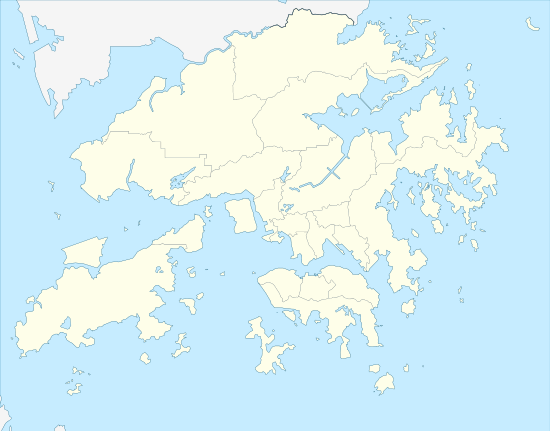Mai Po Marshes
| Mai Po Marshes | |
|---|---|
|
Fish pond in Mai Po | |
 Map of Hong Kong | |
| Location | Hong Kong |
| Nearest city | Yuen Long |
| Coordinates | 22°29′56″N 114°02′45″E / 22.499°N 114.0458°ECoordinates: 22°29′56″N 114°02′45″E / 22.499°N 114.0458°E |
| http://wwf.org.hk/en/whatwedo/conservation/wetlands/managemaipo/ | |

Mai Po Marshes (Chinese: 米埔濕地; Hong Kong Hakka: Mi3bu4 Sip5ti4) is a nature reserve located near Yuen Long in Hong Kong. It is part of Deep Bay, an internationally significant wetland that is actually a shallow estuary, at the mouths of Sham Chun River, Shan Pui River (Yuen Long Creek) and Tin Shui Wai Nullah. Inner Deep Bay is listed as a Ramsar site under Ramsar Convention in 1995, and supports globally important numbers of wetland birds, which chiefly arrive in winter and during spring and autumn migrations. The education center and natural conservation area is 380 acres (1.5 km2) wide and its surrounding wetland has an area of 1500 acres (6 km2). It provides a conservation area for mammals, reptiles, insects, and over 350 species of birds.
The reserve is managed by the World Wide Fund for Nature Hong Kong since 1983; the Agriculture, Fisheries and Conservation Department has responsibilities for the Ramsar site as a whole. Deep Bay faces threats, including pollution, and rising mudflat levels that perhaps arise from intense urbanization, especially (in recent years) on the north, Shenzhen side of the bay.
In recent years, it housed over 55,000 migrating birds, including Saunders' gull and a quarter of the world's black-faced spoonbill population. It also has inter-tidal mangroves along with 24 traditionally operated shrimp ponds (called Gei Wai locally) to provide food for the birds. Mai Po Marshes receive 40,000 visitors annually.
While the area was taken out of the Frontier Closed Area on 15 February 2012, Mai Po Nature Reserve remains a restricted area under the Wild Animals Protection Ordinance (Chapter 170) in order to minimize disturbance to wildlife. Visitors will need a 'Mai Po Marshes Entry Permit' to enter the Reserve which they can apply for by writing to the Agriculture, Fisheries & Conservation Department of Hong Kong Government. These permits are free and normally take about four weeks to be processed.
Avian flu outbreak
In February 2008, the Hong Kong government closed Mai Po for 21 days following the discovery of a great egret infected with H5N1, also known as avian flu. The closing marked the fourth in as many years and was consistent with the government's policy of closing Mai Po whenever an infection is discovered within a 3 kilometer radius of the premises. The World Wide Fund for Nature criticized the government, however, for what it called a discrepancy between the standards for closing Mai Po and the comparably less strict standards applied in urban areas. The World Wide Fund for Nature wanted compensation of 1 million Hong Kong dollars.[1] WWF then claimed that the government had not compensated it for lost income.

See also
- Hong Kong Wetland Park
- Nam Sang Wai
- Environment of Hong Kong
- List of buildings, sites and areas in Hong Kong
References
- ↑ Lam, Agnes (2008-02-27). "South China Morning Post: Mai Po wants review of bird-flu shutdowns WWF seeks HK$1m for closure of reserve". South China Morning Post.
External links
| Wikimedia Commons has media related to Mai Po Marshes. |
- Official WWF-HK Mai Po Webpage
- Birding at Mai Po Marshes
- Deep Bay wetland under threat
- Mai Po Biotope Mapping Key